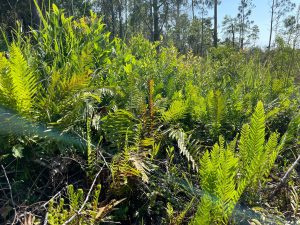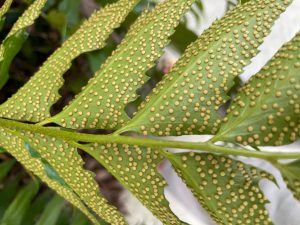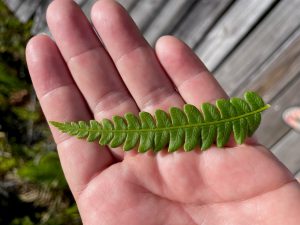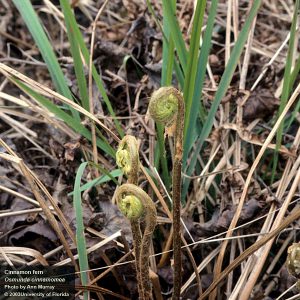
Ferns have grown quietly in the shadows for a very, very long time. These brilliant green plants have been part of the landscape since the Paleozoic Era—before dinosaurs walked the Earth. In fact, ferns were one of the first species to recover many years later, after the dinosaurs were wiped out by a devastating asteroid. Like many other living things at the time, ferns were remarkably oversized back then, sometimes growing 100 feet tall.

Today, you will find wild ferns growing in wet, shady places. They are considerably more manageable in size, perhaps 1-3’ tall and wide. They thrive in freshwater wetlands and river floodplains, and are very popular landscape plants. Ferns are quite adaptable, ranging from typical in-ground growth to staghorn and drought-tolerant resurrection ferns that settle into tree nooks. There are a number of aquatic ferns, as well, which can grow in a garden pond or home aquarium.

Ferns have succeeded for so many eons in part due to their reproductive strategy. They evolved before flowering plants, so instead of investing energy into seeds, they grow from spores. Spores are released in the summer, and are literally catapulted from the plant (by the hundreds) into the air. Spores grow in structures called sporangia on the underside of the fronds, although on the cinnamon and royal ferns (Osmunda spp.) the spores are located on separate fertile fronds.

Once they take root, young ferns have an interesting growth process. They emerge from the ground in springtime as thin, upright stems with curled tops. In this stage, they are called fiddleheads, and are highly sought-after as culinary delicacies. After a few weeks, their leaves unfurl and open into the traditional shape of a fern frond, continuing one of the most successful reproductive processes in history.
 5
5
